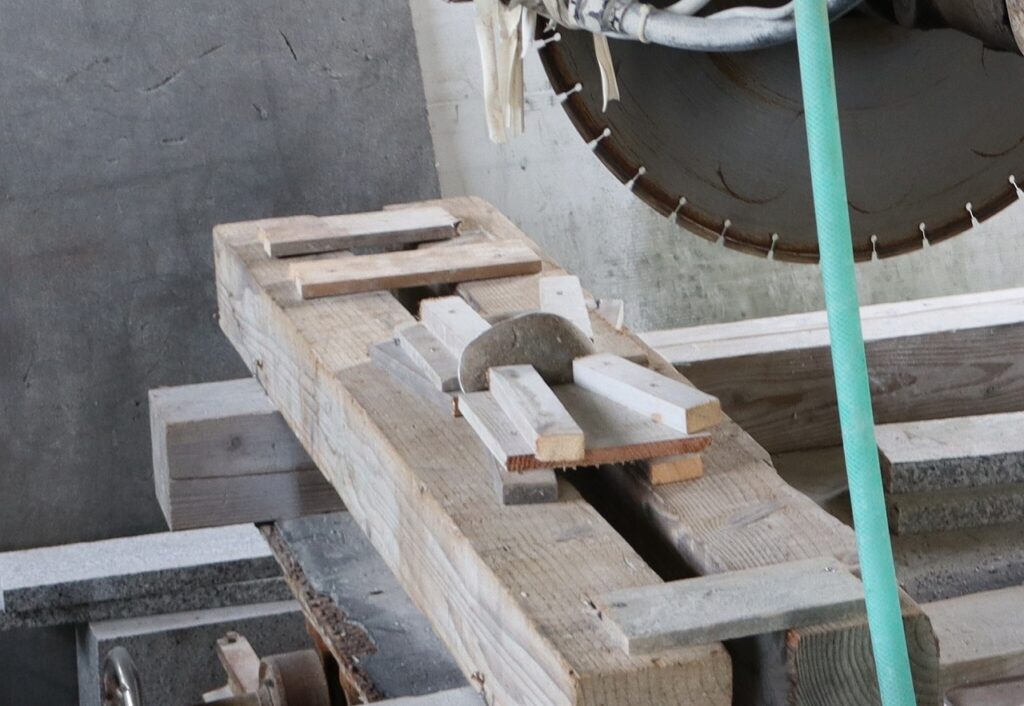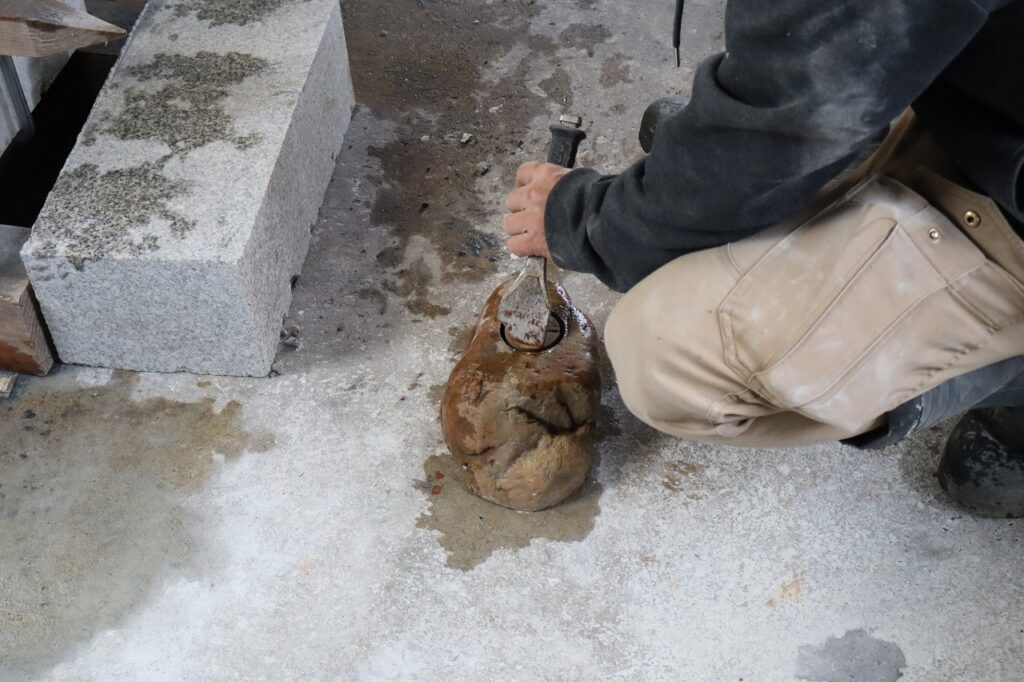The art of processing garden stones
The garden stones are placed in such a way that when they are combined and viewed as a whole, they appear to be in balance. At Raku-teiwa, we have devised a way to achieve the same balance no matter who installs the stones. To achieve this, the bottom of the stone, which is originally buried in the garden to adjust the height, is cut and processed. This makes it possible to install the stone in an optimal balance simply by placing it on a flat surface.
In addition, a hole is dug in the tsukubai’s tsukubachi (stone basin) to collect water. The position of this hole changes the appearance of the entire stone wash basin, so drilling the hole is very important and requires a high level of skill.
Secure the garden stone firmly and completely to the wooden base. If not firmly secured, the garden stone will be defeated by the force of the high-speed rotation and fly away when it is later cut with a large disk-shaped diamond cutter. Therefore, it is necessary to completely secure the garden stone by applying pieces of wood in various directions and securing them with nails.
However, garden stones are pre-determined in detail where they should be cut to achieve the most suitable garden balance. Therefore, it is not enough to fix and cut them; they must be cut at the exact pre-determined cutting points. With this in mind, the garden stone is securely fixed.


The diamond cutter rotates at high speed to chip away at the garden stone bit by bit. The work is carried out under a constant stream of water because of the high temperatures and dust generated during this process.
Because garden stones are very hard and dense, the diamond cutter is rocked back and forth slightly to gradually cut downward.
The garden stone has been completely cut and a flat section has been created. The stone is then polished to finish it off.
The edges of the cut surface are sharp and dangerous, so they are removed by grinding. The edging makes the garden stone safe to touch with bare hands.


For garden stones that will be used as handbasins, a hole is carved in the center of the stone after it is cut. Mark the most suitable place in advance and carve it straight with a core cutter.
Fix the garden stone firmly in place and be careful not to shift the center. The core cutter rotates at high speed, so water should be poured over the core cutter to prevent high temperatures and dust.
The core cutter rotates at high speed while digging little by little. Water mixed with stone dust from the cuttings splashes out.
The core cutter is hollow in the center, so only the outside of the hole is cut to advance.


A hand basin in the state of having been carved to the specified depth. A circular groove has been carved around the mark in the center.
From here, the central column is to be removed.
Carefully remove the central cylinder, as it is still firmly connected to the bottom.
Scratch the central cylinder so as not to damage the surrounding area.


Using the scratches as a cue, the stone alone is vibrated. The vibration removes the central cylinder.
Once the column is removed, the bottom of the stone is ground smooth using a special grinder. The cut edges are then beveled and finished so that they can be touched with bare hands.

